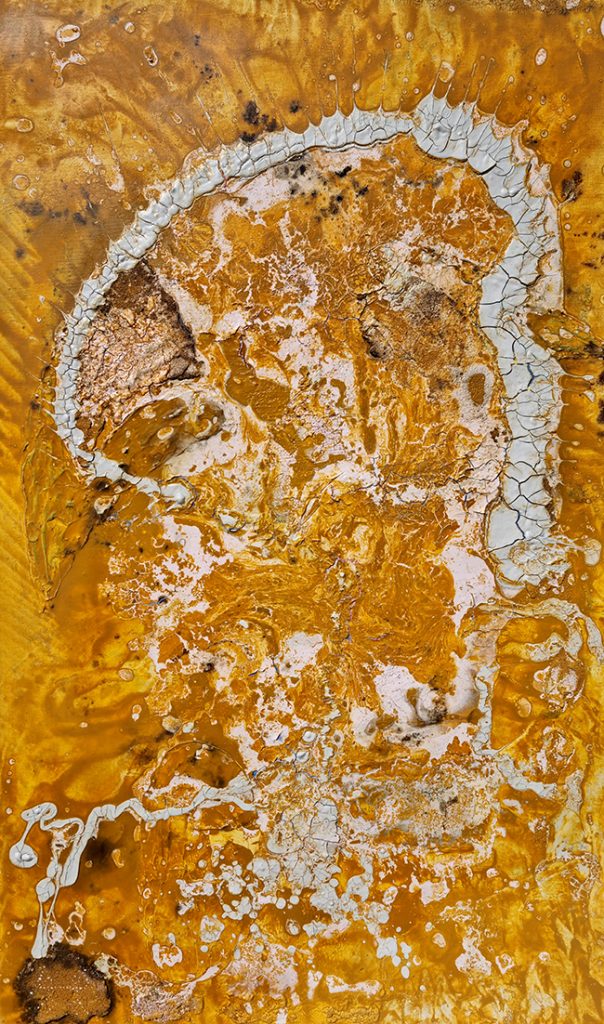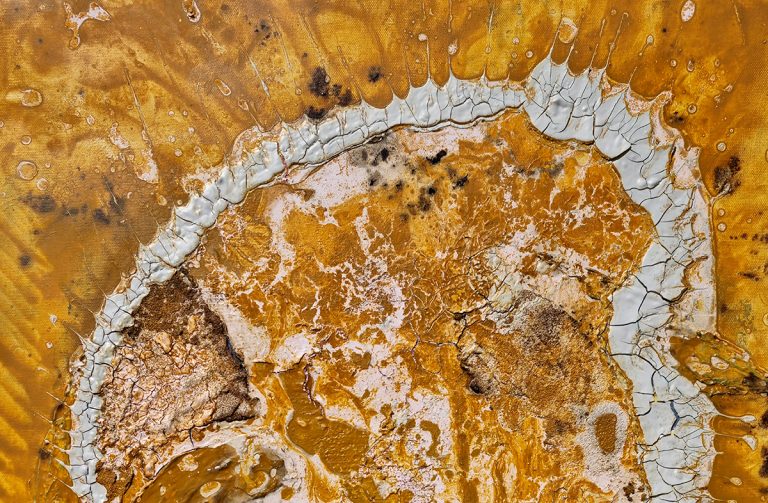Ted Barr’s path to painting didn’t begin in a studio or art school. It started in silence—an internal restlessness that grew over decades of war, study, and searching. Born in Nevodar, Romania in 1957, he moved with his family to Israel at age four. That early dislocation—one home left behind, another not quite formed—set the tone for a life of movement, reflection, and inquiry. In 1975, he was drafted into the Israeli military, eventually becoming a major and deputy battalion commander. Twenty-six years in the army would shape how he saw life, memory, and death.
But even as a soldier, Barr was seeking something deeper. He turned to ancient knowledge—Symbolism, Buddhism, Egyptian cosmology, Kabbalah, and numerology. These weren’t casual interests. They became the scaffolding for a lifelong philosophical inquiry. At the same time, he earned an MBA in marketing, which gave him the tools to share his vision with the world. In 1995, Barr began studying under Israeli artist Shlomo Tzafrir in Old Jaffa. By 2001, his first exhibition signaled a shift: from soldier to artist, from execution to exploration. Since then, his art has been grounded in cosmic themes—deep space, origin myths, and invisible forces. But one work in particular, What Remains, brings all those threads crashing down to Earth.

What Remains
100 x 60 cm
Oil, tar, gesso, acrylic on canvas
2025
What Remains isn’t abstract. It doesn’t float in the stars. It digs into the dirt—into grief, memory, and the gap between official history and lived experience.
The painting was born out of a memory that refused to let go. Barr describes a nighttime funeral during his military service. A house was bombed. A family of five lived there. Four coffins were buried. He reported the numbers and moved on, like soldiers do. But a year later, something broke. His former commander asked about the fifth body. Barr didn’t have an answer.
He went back. The house was rubble, the whole village ghosted. With a bulldozer and a few soldiers, he cleared the debris and found her: a skeleton in a decaying golden dress. The mother. Forgotten. Unnamed. Lost to everyone but him. He buried her. Quietly. Alone.
But when he returned to tell the officer he’d completed the mission, the man didn’t recall the question. No one did. No missing report, no fifth body logged. Nothing.
The story lives on only through Barr—and now, through paint.
Visually, What Remains is built on heavy material: oil, tar, gesso. The canvas isn’t delicate—it feels like a wall scorched and scraped. There’s no clear figure, but traces emerge. A dress-like curve. The shadow of a skull. Circular impressions like blast waves or moons or ancient coins. It’s not literal, but it holds weight—like the memory it was made to preserve.
The use of tar stands out. It’s not just texture—it’s history. Tar clings, stains, refuses to lift. It speaks to something burned into the past that won’t cleanly fade. Acrylic adds surface light, but it’s the oil and gesso that give the work its thickness, its time.
This isn’t an artwork about glory or resolution. It’s about doubt. About the hollowness that can follow even after justice is done—when it’s done too late, and no one remembers why it mattered. It asks something chilling: if a person is forgotten, and no one recalls the loss, did they ever really exist?
For Barr, this isn’t just one story. It’s a fracture in how we process memory, war, and humanity. The missing mother could be anyone. Someone erased by violence, and then by bureaucracy. Someone who once loved, fed children, wore gold. Now reduced to a question, and eventually, to silence.
It’s not hard to see how Barr’s art connects back to his lifelong study of symbols, death rituals, and spiritual frameworks. But in What Remains, all the esoteric philosophy collapses into something brutally simple: a body. Forgotten. Found. Reburied.
This work doesn’t moralize. It doesn’t offer closure. It lingers, unresolved—just like the memory did for Barr. The image, like the story, is there to haunt, not to heal.
Through What Remains, Barr’s role shifts again—from soldier, to seeker, to witness. Not just of war, but of how easily a person—an entire life—can vanish.
And how it takes art, sometimes, to hold them in place.


